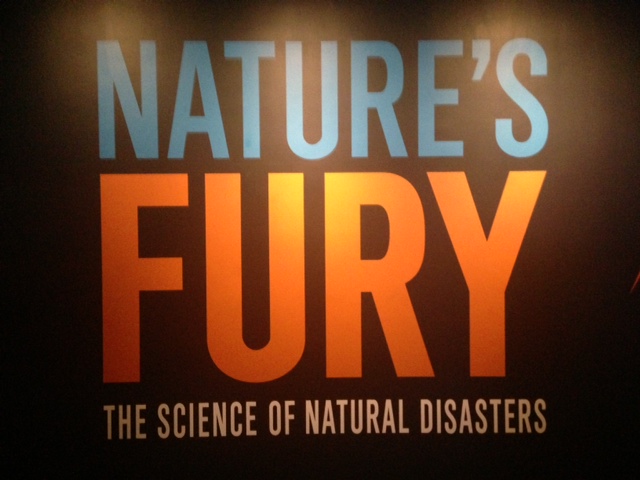By James Clark
 We can recall lessons of natural disasters from the 1906 earthquake in San Francisco. We even remember the recent catastrophes such as the earthquake and typhoon in Tohoku, Japan; the tornados in Moore, Oklahoma; even Hurricane Sandy that plunged the East Coast. Damage was caused, lives were lost, and we are still left with a lingering question why?
We can recall lessons of natural disasters from the 1906 earthquake in San Francisco. We even remember the recent catastrophes such as the earthquake and typhoon in Tohoku, Japan; the tornados in Moore, Oklahoma; even Hurricane Sandy that plunged the East Coast. Damage was caused, lives were lost, and we are still left with a lingering question why?
The American Museum of Natural History (AMNH) opened its doors to its new exhibit Nature's Fury, dedicated to the science of natural disasters.
President of AMNH Ellen Futter said the new exhibit sheds light on historic and recent natural disasters, and the science it takes to predict and lessen the risk of future catastrophes.
"While these events often instill fear, understanding the science behind them helps us better predict, prepare for, and cope with them," said Futter. "This exhibition is part of the Museum's longstanding effort to explore the interactions between humans and the natural world. And as our climate warms and our environment changes, understanding the impact of these phenomena is more important than ever."
Senior Vice President Michael Novacek said the exhibit illustrates how dynamic the planet is.
"Natural disasters are part of the human experience," said Novacek. "They're phenomena that are tremendous in terms of our daily lives."
Curator of Nature's Fury Edmond Mathez said science is bringing us an understanding of how natural disasters work and how we can lower the risk that are the result.
"Science is allowing us to be more probabilistic about these natural disasters," said Mathez. "In the last several years we have seen extreme weather events, we will be able to better prepare for the ones in the future."
Other speakers included assistant curator for the division of anthropology Jennifer Newell, and James Webster curator for the department of earth and planetary sciences. Each speaker noted the importance of studying and researching disasters and highlighted that their research will allow mitigation that will help save more people when nature strikes again.
The museum features hands on exhibits including a seismometer that measures magnitude as you make a stomp with your feet; an interactive table that shows the timeline of Hurricane Sandy, and the effects it had on the island; and a stimulator that allows the visitor to see the inside and approach of a tornado. It also features historic tornados, hurricanes, earthquakes and volcanoes showing the progression in technology and predictability between the events.
The exhibit is open to the public starting November 15th until August 9th.

Leave a comment